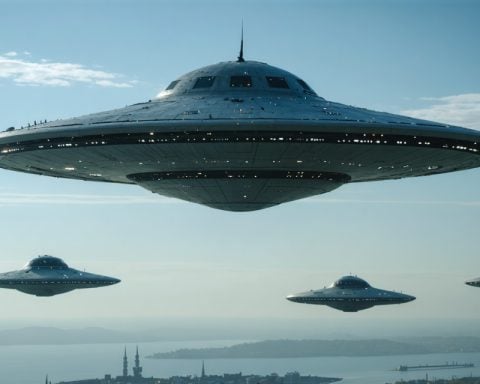- Gaia completed a successful 10-year mission, mapping approximately 2 billion stars with high accuracy.
- The satellite utilized dual telescopes and adjusted its orbit by releasing nitrogen gas.
- Gaia will be passivated by March, ensuring it safely avoids any hazards from space debris.
- The next significant data release is expected in 2026, which may lead to new astronomical discoveries.
- Gaia’s studies have resulted in over 13,000 scientific publications, shaping modern astronomy.
- The findings reveal the Milky Way as a dynamic system influenced by interactions with dwarf galaxies.
- Gaia’s legacy continues to enhance our understanding of the universe and its complexities.
On January 15, Gaia, the trailblazing satellite of the European Space Agency, gracefully closed its eyes after a groundbreaking 10-year mission. This remarkable spacecraft spent a decade meticulously mapping the cosmos, pinpointing the positions and distances of about 2 billion stars with astounding precision.
Equipped with dual telescopes, Gaia danced around the Milky Way, adjusting its orbit by releasing tiny bursts of nitrogen. But as its gas reserves dwindled, the satellite prepared for retirement, set to “passivate” by March, clearing its tanks and powering down to safeguard against space debris.
Despite its mission coming to an end, Gaia’s legacy is just beginning. Project scientist Johannes Sahlmann revealed that the next major data release is slated for 2026, promising to uncover even more secrets of our galaxy. Gaia’s findings have already inspired over 13,000 scientific publications, making it the backbone of modern astronomy.
What do we now know about our galactic home? Gaia’s revelations paint a picture of a Milky Way in flux—no longer a tranquil spiral but a dynamic entity shaped by historical interactions with dwarf galaxies. The disk of our galaxy is even slightly twisted at its edges, hinting at a tumultuous past.
As we prepare for the future of research with Gaia’s treasure trove of data, one thing is clear: our understanding of the universe has been transformed forever. The story of Gaia continues, urging us to look deeper into the wonders of the cosmos.
Unlocking the Cosmic Secrets: Gaia’s Legacy and the Future of Astronomy
The End of an Era: Gaia’s Achievements and What Lies Ahead
Gaia, the pioneering satellite of the European Space Agency, completed an exceptional decade-long mission, meticulously mapping around 2 billion stars with remarkable precision. As it gracefully concluded its mission on January 15, it has left a powerful legacy that is invaluable for astronomical research and our understanding of the Milky Way.
New Insights and Innovations
1. Data Release Schedule: The next significant data release from Gaia is expected in 2026, which will include extensive new datasets that could unlock further secrets about the structure and evolution of the Milky Way.
2. Understanding Galactic Interactions: Gaia’s findings have shown that our galaxy is not static; instead, it has been shaped by historical interactions with dwarf galaxies. This dynamic nature of the Milky Way presents a fresh perspective on galactic evolution.
3. Influence on Scientific Research: With over 13,000 scientific publications inspired by Gaia’s data, it has become the cornerstone for contemporary astronomical studies and research methodologies.
Key Questions About Gaia and Its Outputs
1. How will Gaia’s data transform our understanding of dark matter?
Gaia’s precision measurements of star positions and velocities will facilitate improved models of dark matter distribution within the Milky Way. By analyzing stellar motion, researchers can infer the influence of dark matter on our galaxy’s structure, potentially leading to groundbreaking discoveries.
2. What future innovations can we expect in astronomical missions following Gaia?
Gaia’s successful deployment and operation pave the way for future astronomical satellites. We can anticipate missions that may focus on exoplanets, cosmic background radiation, and even deeper insights into cosmic inflation and the expansion of the universe, building off Gaia’s methodologies.
3. How does Gaia’s mission relate to sustainability in space exploration?
Gaia’s end-of-life plan, which includes passivation to prevent creating space debris, highlights the increasing focus on sustainable practices in space missions. Future missions are expected to adopt similar measures, promoting a healthier space environment while advancing scientific research.
Conclusion
Gaia’s mission may be over, but its impact on astrophysics is just beginning. As we await the next data release, the revelations about the Milky Way’s complex nature challenge traditional notions of galactic structure and inspire new waves of research. The legacy of Gaia urges us to explore further into the cosmos, with promising discoveries on the horizon.
For more information, you can explore the European Space Agency website for updates on Gaia and other missions.



















